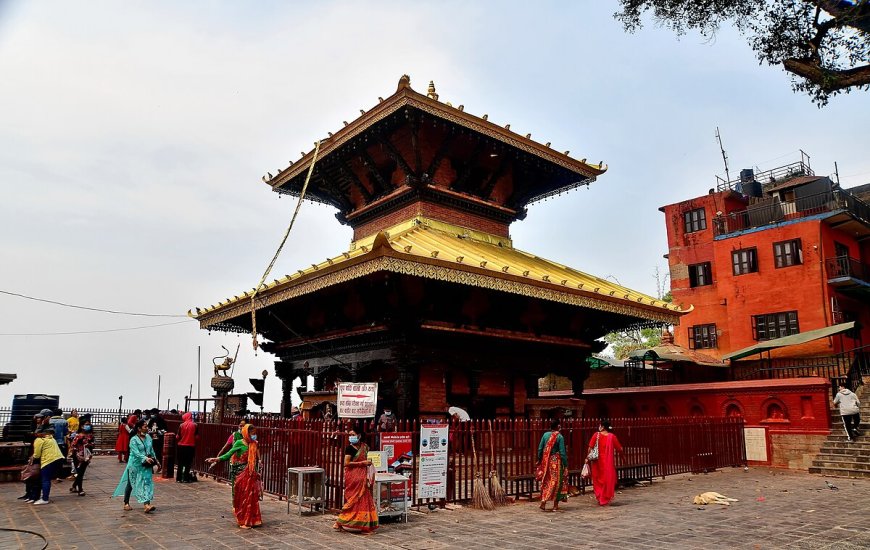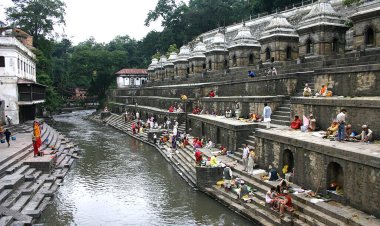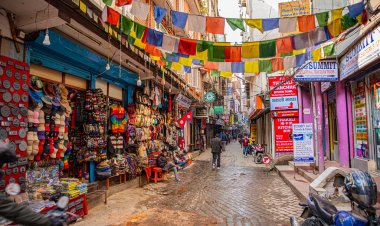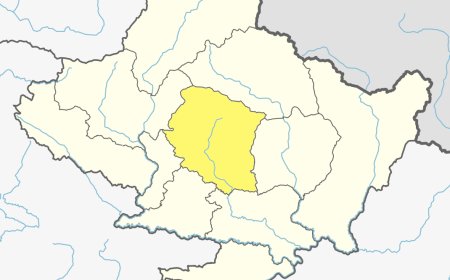The Manakamana Temple: A Divine Journey in Nepal
Manakamana Temple in Nepal's Gorkha district is a famous Hindu temple known for its wish-fulfilling goddess, cable car rides, and rich cultural heritage and it's importance.
Nepal is famous for its culture and heritage, with many temples and holy places. Manakamana Temple is one of the most famous and most visited temples among them. The temple is located in the beautiful hills of Gorkha district and occupies an important place in the hearts of the local people as well as the tourists visiting here. People visit Manakamana to worship the goddess, seek blessings, and experience the cultural richness of it.
The Legend of Manakamana Temple
The Manakamana Temple has its roots in Hindu mythology. This is the incarnation of Goddess Manakamana, believed to be a form of Bhagwati. Its history goes way back to King Ram Shah of Gorkha. His queen was said to possess divine powers, embodying the goddess. This was known only to priest Lakhan Thapa. After the death of King Ram Shah, the queen, following Hindu sati, jumped into his funeral pyre. She had told one Lakhan Thapa that she would come back as a goddess and grant wishes of the devotees. Later, it was here that a farmer found a stone idol believed to be the goddess. On this sacred site, the temple was built, and to this day Lakhan Thapa's descendants serve as priests.
The name "Manakamana" is derived from the Nepali words mana (heart) and kamana (wish), symbolizing the goddess's power to grant the heartfelt wishes of her devotees.
Location and Accessibility
Manakamana Temple is situated in the Gorkha district of Nepal, on top of a hill at about an altitude of 1,300 meters. Its position facing the hills and valleys gives a breathtaking view. The journey to this temple has now become an adventure and an attraction for visitors.
But the most preferred way to go up to the temple is through the cable car service from Kurintar, a small town along the Prithvi Highway. One may enjoy the thrilling experience of the cable car ride over the lush green hills and the Trishuli River. The 10-minute ride is both scenic and convenient, making it accessible to people of all ages.
For the more adventurous, trekking paths wind their way to the temple through dense forests and quaint villages. However, this option is more time-consuming and the physically demanding one, it offers an intimate experience of nature and local culture.
Architectural Significance
The Manakamana Temple is a magnificent example of traditional Nepalese architecture. In its construction, the pagoda style is used classically, with tiered roofs bearing complex wood carvings. Its design reflects the artistic and cultural heritage of Nepal.
Inside the temple, the main idol of Goddess Manakamana is kept, and the sanctum sanctorum is surrounded by all sacred ornaments and symbols from Hindu mythology. Offerings include flowers, fruits, and animals by the devotees in traditional ways. In the courtyard of the temple, one finds a calm environment to sit, meditate, and feel the spiritual aura of the place.
Spiritual and Cultural Significance
Manakamana Temple is not only a place of worship; it is one of those cultural assets that bear immense significance in the Hindu traditions. The temple wears a more vibrating look on main Hindu festivals such as Dashain and Tihar. Thousands of devotees pour in the temple to offer their prayers and participate in special rituals during those festivals.
Offerings at the temple include coconuts, flowers, and incense. It is believed that the goddess grants the wishes of people praying from a pure heart. They come here to get blessings for good health, prosperity, and happiness. Other than religious significance, it represents Nepal's heritage. It is representative of the country's spiritual heritage, building a connection between the past and the present.
The Cable Car Ride: A Unique Experience
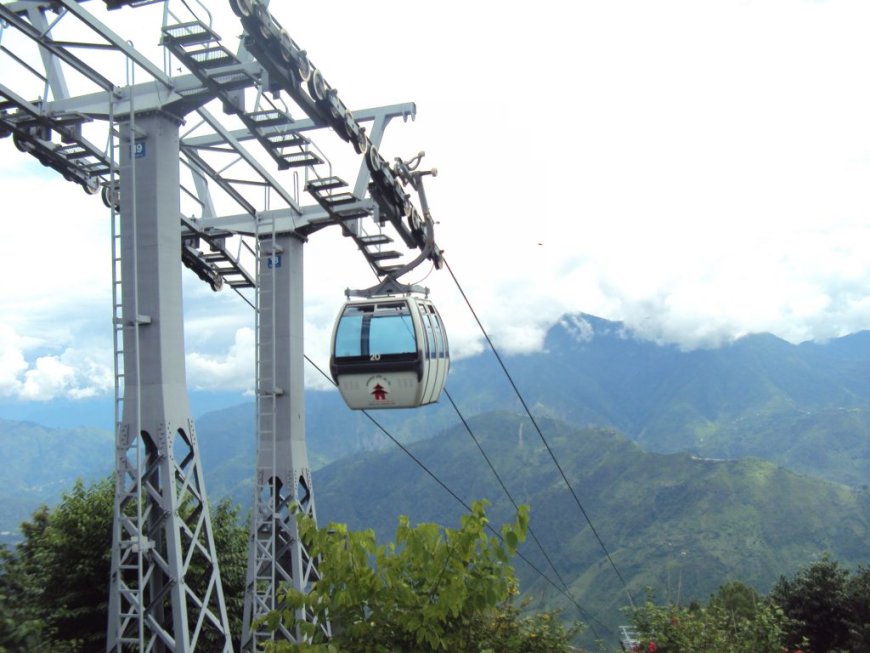
The introduction of the cable car service to Manakamana Temple has been a game-changer for pilgrims and tourists. Opened in 1998, it was the first cable car service in Nepal and since then has remained a highlight of the journey.
The ride presents a thrilling experience with the Trishuli River below and the lush green hills surrounding it. Visitors are also able to catch glimpses of the snow-capped peaks of the Himalayas on clear days. A cable car makes the temple accessible to elderly people and those who might find the trek challenging.
For many, the cable car ride is as memorable as visiting the temple itself, adding a sense of adventure to the spiritual journey.
Best Time to Visit Manakamana Temple
The best time to visit Manakamana Temple is during autumn (September–November) and spring (March–May). These seasons offer pleasant weather and clear skies, making the journey more enjoyable. The cool breeze and vibrant greenery during these months add to the overall experience.
It is better to avoid traveling in the monsoon time of year (June–August) as it rains heavily and travel becomes difficult. Likewise, during peak summer, it can be very hot and not at all pleasant for those people who trek to the temple.
Tips for Visitors
Following are a few helpful tips that will make a visit to Manakamana Temple a rewarding experience:
- Dress Modestly: As it is a sacred place, visitors should dress appropriately. Avoid wearing shorts or revealing outfits.
- Offerings: If you wish to make offerings, the common things used are coconuts, flowers, and incense. These items are available within walking distance from the temple.
- Respect Customs: Follow the customs of the locals; don't rush in with your shoes on and disturb what's being performed inside the temple.
- Timing: Coming early in the morning will be pretty good to avoid a big line on weekends and festival days.
- Plan in Advance: The weather and cable car schedules should be checked beforehand so that your journey proceeds smoothly.
Manakamana Temple is not only a place to worship, but it's a blend of spirituality, culture as well as natural beauty. From its legendary origins to the stunning hilltop location, the temple presents a unique and divine experience for all who visit. Whether one desires to gather blessings, experience the rich history of Nepal, or simply take in the picturesque view en route, Manakamana Temple is a destination for anyone. When traveling to Nepal, a journey to Manakamana Temple is a must for an unforgettable memory.
Frequently Asked Questions (FAQ's)
1. What is Manakamana Temple?
Manakamana Temple is a revered Hindu shrine in Nepal dedicated to Goddess Manakamana, known for granting wishes.
2. Where is the temple located?
It is situated on a hilltop in the Gorkha district of Nepal.
3. How can I reach Manakamana Temple?
You can take a scenic cable car ride from Kurintar or trek through forested trails.
4. What is the significance of the temple?
The temple is believed to fulfill the heartfelt wishes of devotees and is a symbol of Nepal’s cultural heritage.
5. What is the best time to visit the temple?
Autumn (September–November) and spring (March–May) are the best seasons to visit.
6. What is the architectural style of the temple?
It features a traditional Nepali pagoda-style design with intricate wood carvings.
7. What rituals are performed at the temple?
Devotees offer coconuts, flowers, and prayers to seek blessings from the goddess.
8. Is the cable car ride safe for visitors?
Yes, the cable car ride is well-maintained and provides a safe, scenic journey.
9. Can I visit the temple during monsoon season?
It is best to avoid the monsoon due to heavy rains, which may disrupt travel.
What's Your Reaction?



























































































